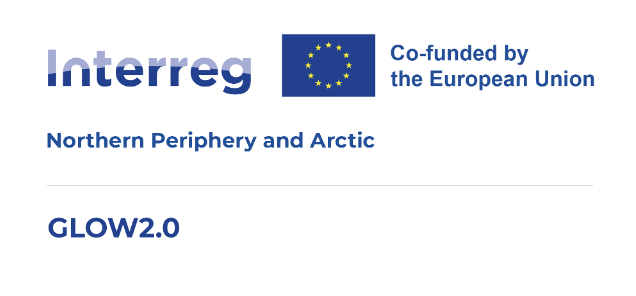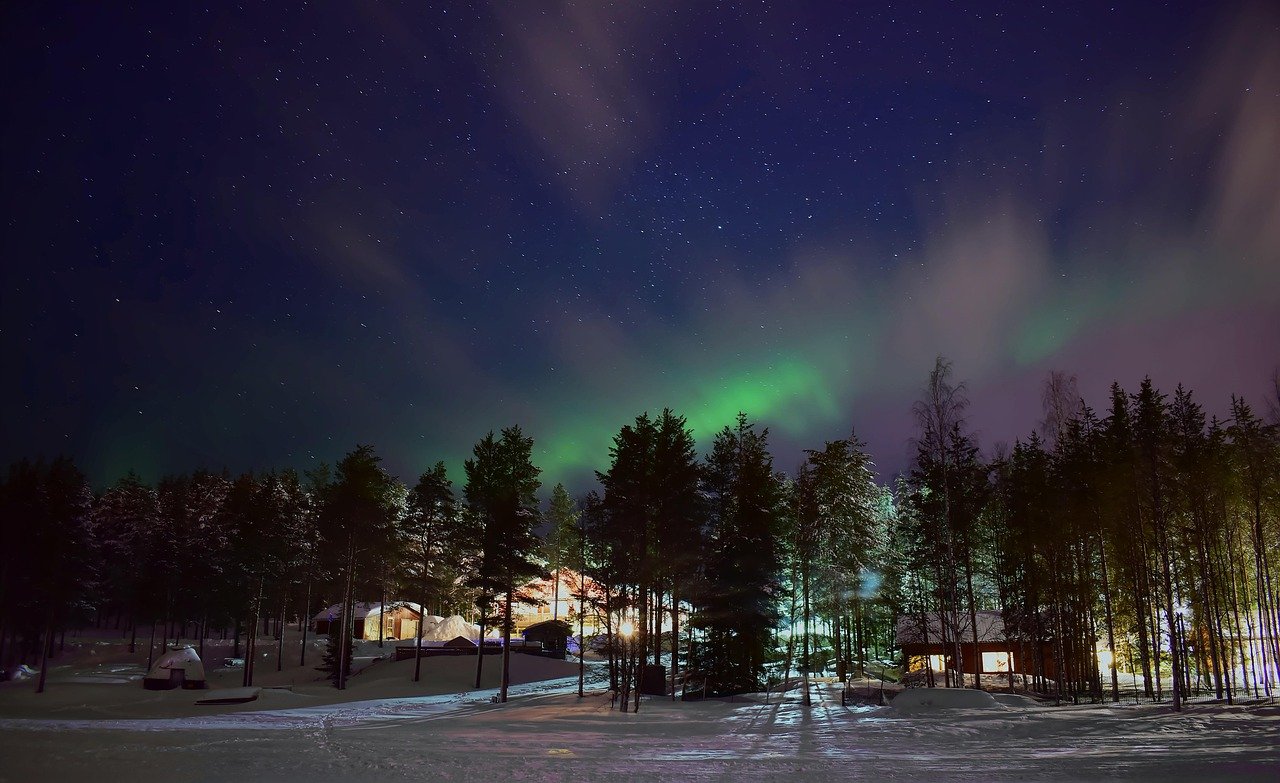GLOW2.0 project attempted to pilot STELLA CAELUM – a new northern event about night sky science, auroral tourism and the possibilities of darkness, aimed at providing up-to-date information and multidisciplinary approach to utilizing darkness, to inspire people to embrace darkness and encourage companies to develop new programme services. The goal was to showcase via the event, a dark sky activity that can be transformed into a recurring event in coming years, and hopefully also be adapted or scaled in other Northern Periphery and Arctic regions.
The STELLA CAELUM event took place in Utsjoki during the second week of October, attracting participants from northernmost Lapland, Northern Norway and other European regions to listen and discuss about values and benefits from darkness for science, health and tourism. The event turned the map upside down offering participants a different look at the world from space and from the North. Stella is derived from Latin word meaning “star”. Caelum, also a Latin word, means “sky” or “heaven”, hence Stella Caelum “Starry Sky” or “Stellar heaven”.
Night Sky heritage – A look from Space and the North
The Mayor of Utsjoki Päivi Kontio opened the event with a welcome speech, followed by a dive into the wonders of the northern skies, with talks covering topics on the future possibilities of embracing the uniqueness of the dark season and nighttime. Speakers included Finnish professional astronomer and writer – professor emeritus Esko Valtaoja, PhD Esa Turunen of Arctic Academy, PhD Jyrki Manninen of Sodankylä Geophysical Observatory, PhD and entrepreneur Olli Reijonen of Syrjävaara Goodnight Oy, research coordinator Emma Bruus at Sodankylä Geophysical Observatory, director of economic development at Utsjoki Municipality Tanja Lepistö, and researcher Marius Wang from The Arctic University of Norway.

These experts and professionals in the fields of astronomy, space science, Northern Lights tourism, regional and economic development offered exceptional insights about ways we could utilise and experience the uniqueness of dark time as both a reliable partner to businesses (economic development), and a restorative resource for people (night sky heritage conservation). The participants also got the chance to test GLOW2.0 Virtual Planetarium developed by the project and engage in a panel discussion with tourism enterprises from Norway – Bjørnfjell Mountain Lodge, and Finnish Lapland region Kakslauttanen and Visit Inari. The event was hosted by science journalist Jari Mäkinen.
Utsjoki – Where Arctic Nature Meets Sámi Culture
Participants also got the chance to network, share ideas, and participate in local and dark-sky themed cultural and nature activities. A children’s nighttime landscapes depiction gallery filled the event premises, giving participants a chance to see the local environments through the eyes of the school children in Lapland. The artworks and paintings also challenged participants to think about the interplay between artificial lighting at night and night sky – a nature and culture heritage threatened today in many places by inappropriate and excessive artificial lighting at night. One can imagine what type of result would be achieved for example, if the same activity was given to children in a region with excessive lighting- light pollution.

The evening’s musical experience was provided by local Sámi musician Hildá Länsman, known for her proud preservation of Sámi culture and joik traditions. Site visits to regional companies, such as aurora focused Kakslauttanen Arctic Resort- home of the world’s first glass igloo innovation that redefined auroral tourism, and the Siida – Sámi Museum and Nature Center focused on protecting and sharing Sámi identity and cultural environments, rounded up the event.

The Importance and the Beauty of Things which are Not – The Night Sky heritage
Darkness and the different levels of twilight is an undervalued resource – a valuable resource of everyday life and wellness, and a condition that affects our lives in the North for almost half the year. Natural darkness plays a crucial role in the living environment and has positive benefits on people, animals, and the economy.
STELLA CAELUM, organized by the Interreg project GLOW2.0 via Regional Cooperation Association of Northern Lapland and Utsjoki Municipality, showcased how a northern event can combine night sky science, dark sky tourism and activities centered around local nature and culture values, to provide darkness experiences with endless possibilities. Professor Emeritus Esko Valtaoja summed this very well – the Night Sky is not only a beautiful intangible nature and cultural heritage, but also one of the most important universal heritage that has inspired scientific breakthroughs, transformed societies, and continues to shape life and living environments. Hopefully the event and experiences inspired participants, setting an example for communities across the Northern Periphery and Arctic region.
Presentations can be found from the event page.
The event and themes also attracted wide media coverage, some of which you can read from the following links (note that some articles and news are in local languages).
- News on the main channel YLE news (from 01:50): YLE TV
- News on Sámi-language TV news (from 00:10): YLE TV
- News article on Municipality’s and entrepreneurs’ views in YLE: YLE News
- News article on Lapland entrepreneur’s experiences and views in: Lapin Kansa.
Author:
Daisy Silvennoinen, Project Specialist, Karelia University of Applied Sciences


